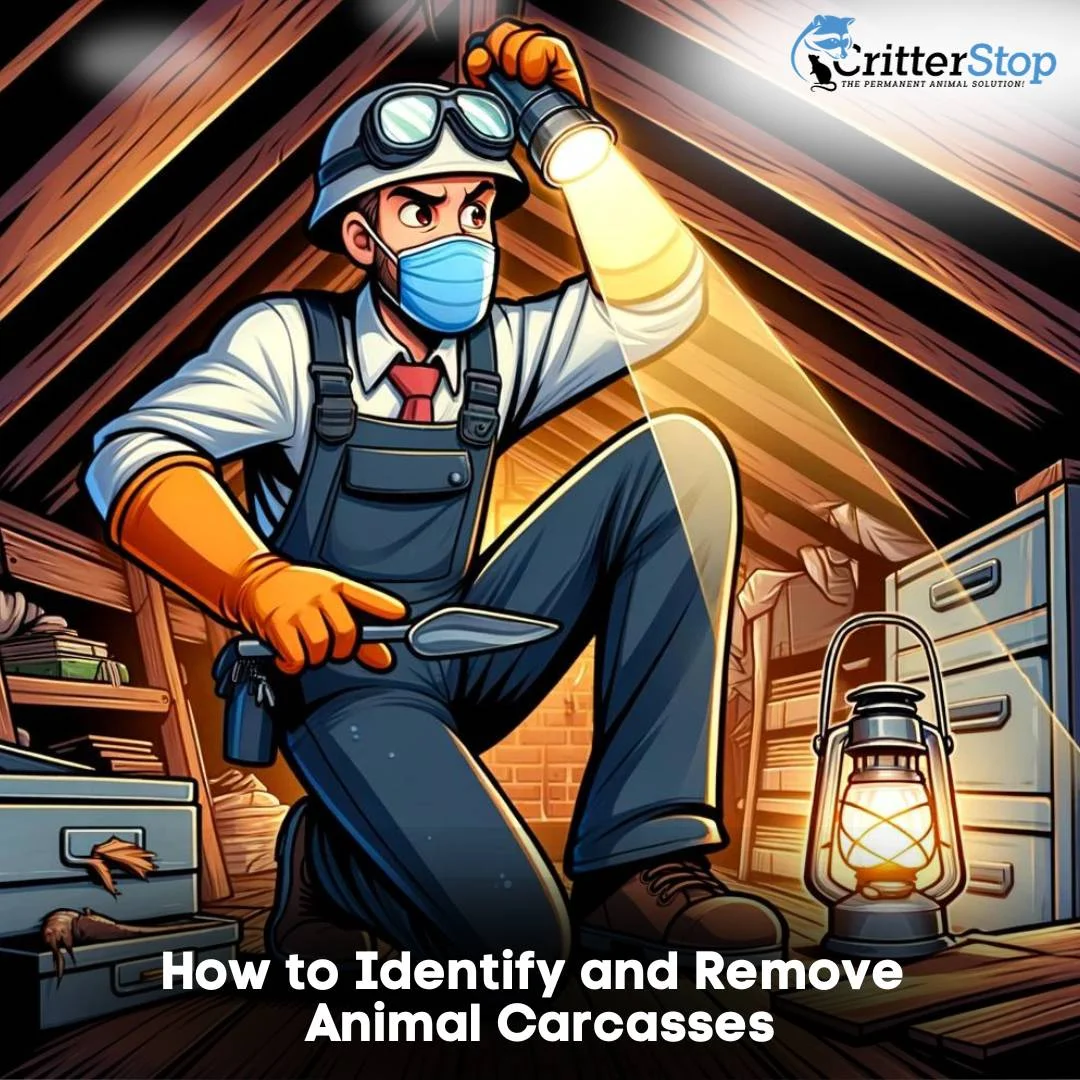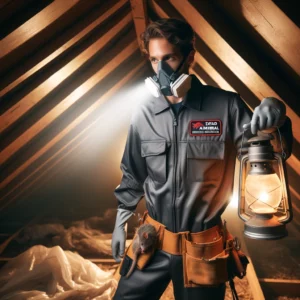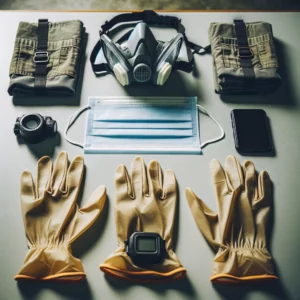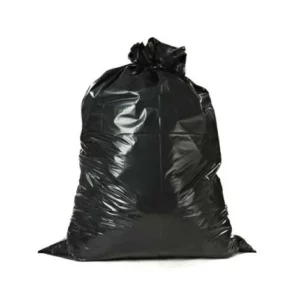
Animals carcasses can often be found in various places, whether it is in your backyard, a nearby park, or even inside your own home. The presence of these remains can not only be disturbing but also pose certain health risks. This guide by Critter Stop in Fort Worth will provide you with essential information on how to identify and safely remove animal carcasses, as well as address any health concerns that may arise.
When stumbling upon an animal carcass, the first important step is to properly identify it. This is crucial in order to determine the appropriate actions needed for removal. Here are some key factors to look for:
The size and shape of the remains can give you an initial clue about the type of animal involved. The presence of fur, feathers, or scales can further narrow down the possibilities. Additionally, observing any distinct physical characteristics or markings can help in identifying the species.
Once you have identified the animal carcass, it is important to consider the context in which it was found. Is it in a natural habitat, such as a forest or a field, or is it in a more urban environment? This information can provide valuable insights into the cause of death and the potential risks associated with the carcass.
For example, if the carcass is found in a forest, it could be the result of a predator-prey interaction or a natural death. On the other hand, if it is found in an urban area, it may have been hit by a vehicle or succumbed to a disease. Understanding the circumstances surrounding the carcass can help in making informed decisions about its handling.

Handling animal carcasses requires caution and proper procedures to prevent the transmission of diseases. The decomposition process can release harmful bacteria, viruses, and fungi that can contaminate the surroundings and potentially pose a risk to humans and other animals.
When approaching an animal carcass, it is essential to use personal protective equipment, such as gloves and a face mask, to minimize the risk of exposure to pathogens. Additionally, it is advisable to disinfect any tools or equipment used during the handling process to prevent cross-contamination.
Furthermore, the improper disposal of remains can attract other pests, such as scavengers or insects, which can further complicate the situation. It is important to follow local regulations and guidelines for the proper disposal of animal carcasses to prevent the spread of diseases and maintain environmental hygiene.
By handling carcasses in a safe and effective manner, you can minimize the potential dangers. This includes using appropriate containment methods, such as sealed bags or containers, to prevent the spread of pathogens and odors. Additionally, it is important to promptly report any findings to the relevant authorities, such as local animal control or wildlife agencies, to ensure proper documentation and further investigation if necessary.
Once you have identified the animal carcass and understand the risks associated with handling it, the next step is to safely remove it from the area. Here is a step-by-step guide:
Removing animal carcasses can be a challenging task, but with the right precautions and equipment, it can be done safely and efficiently. By following these steps, you can ensure that the process is carried out without any unnecessary risks:
1. Put on protective gear, such as gloves and a face mask, to avoid direct contact with the remains and limit exposure to harmful substances.
When dealing with animal carcasses, it is crucial to protect yourself from potential health hazards. Wearing gloves and a face mask will provide a barrier between you and any harmful bacteria or pathogens that may be present.

2. Use a sturdy shovel or tongs to carefully lift the carcass and place it in a heavy-duty garbage bag. Double-bagging is advisable to prevent leakage.
Having the right tools for the job is essential. A sturdy shovel or tongs will allow you to handle the carcass with care, minimizing the risk of any accidents or injuries. Placing the carcass in a heavy-duty garbage bag will help contain any fluids or odors, ensuring a clean and hygienic removal process.
3. Seal the bag tightly and place it in a secure container, such as a heavy-duty plastic bin with a lid. This will prevent animals or pests from accessing the remains.
Properly sealing the bag is crucial to prevent any potential contamination or spread of disease. Placing the bag in a secure container, such as a heavy-duty plastic bin with a lid, will further ensure that animals or pests cannot access the remains, reducing the risk of any further complications.
4. Dispose of the container according to local regulations. Some areas have designated animal carcass disposal sites, while others may require contacting a professional waste management service.
Disposing of animal carcasses should be done in accordance with local regulations to ensure proper and safe disposal. Some areas may have designated disposal sites specifically for animal remains, while others may require you to contact a professional waste management service for proper disposal. It is important to follow these guidelines to avoid any potential legal or environmental issues.
Having the right tools and equipment can make the process of removing animal carcasses safer and more efficient. Here are some essential items to consider:
Investing in the right tools and equipment is crucial for safe carcass removal. A sturdy shovel or tongs will allow you to handle the remains with precision and control. Heavy-duty garbage bags will ensure that any fluids or odors are contained, preventing any potential contamination. Protective gloves and a face mask will provide an additional layer of protection against harmful substances. Finally, a secure container with a lid will help prevent access by animals or pests, ensuring a clean and safe removal process.

Handling animal carcasses can expose you to various health risks. Therefore, it is essential to be aware of these potential dangers and take necessary precautions to safeguard your well-being.
The biological materials found in animal remains can harbor numerous pathogens, including bacteria, viruses, and parasites. Exposure to these microorganisms can lead to infections, allergic reactions, or even more severe diseases.
For example, when handling a decomposing carcass, there is a risk of inhaling airborne bacteria or viruses. These pathogens can cause respiratory infections such as pneumonia or bronchitis. Additionally, certain parasites found in animal remains, such as ticks or fleas, can transmit diseases like Lyme disease or typhus.
Moreover, some animal carcasses may carry zoonotic diseases, which are infections that can be transmitted from animals to humans. For instance, handling a carcass infected with the Hantavirus can lead to Hantavirus Pulmonary Syndrome, a potentially fatal respiratory disease.
Here are a few precautions to consider when dealing with animal carcasses:
1.- Always wear protective gear, including gloves, a face mask, and goggles if necessary.
Wearing gloves is crucial as it provides a barrier between your skin and the potentially infectious materials. A face mask and goggles can protect you from inhaling any airborne particles or getting splashed with bodily fluids.
2.- Avoid direct contact with the carcass and any bodily fluids.
It is essential to minimize direct contact with the carcass to reduce the risk of exposure. Use tools such as tongs or shovels to handle the remains, ensuring that you maintain a safe distance.
3.- Wash your hands thoroughly with soap and water after handling the remains.
Proper hand hygiene is crucial in preventing the spread of pathogens. Use warm water and soap to thoroughly wash your hands for at least 20 seconds, ensuring that all surfaces are cleaned, including between fingers and under nails.
4.- Disinfect any tools or surfaces that come into contact with the carcass.
After handling the carcass, it is important to disinfect any tools or surfaces that may have been contaminated. Use a suitable disinfectant to kill any remaining pathogens and prevent their spread.
5.- Keep pets and children away from the area to prevent accidental exposure.
Animal carcasses can attract curious pets or children who may unknowingly come into contact with the remains. To prevent accidental exposure, ensure that the area is secured and inaccessible to pets and children.
By following these precautions, you can minimize the health risks associated with handling animal carcasses and protect yourself from potential infections or diseases.
In addition to safely removing animal carcasses, it is equally important to address any underlying pest issues in your surroundings. Ft. Worth residents have access to professional pest control services as well as several do-it-yourself (DIY) tips:
Seeking the assistance of professional pest control services can help you identify, eliminate, and prevent pest infestations in your home or property. These experts have extensive knowledge and experience in dealing with a wide range of pests, ensuring effective and long-lasting solutions.
If you prefer handling pest removal on your own, here are a few tips to get you started:
By following these tips and considering professional services when necessary, you can effectively manage pest issues and create a safe and peaceful environment in Ft. Worth.
In summary, identifying and removing animal carcasses requires careful observation, proper handling techniques, and consideration of potential health risks. By following the advice provided in this guide by Critter Stop in Fort Worth, you can confidently address these challenges and create a safer living environment for yourself and your community.